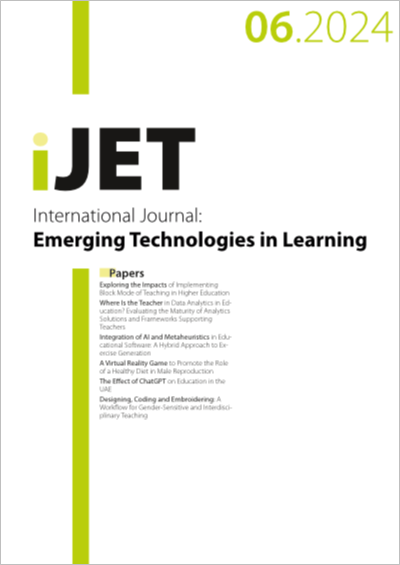Exploring the Impacts of Implementing Block Mode of Teaching in Higher Education
DOI:
https://doi.org/10.3991/ijet.v19i06.49229Keywords:
block mode of teaching, Intensive mode of delivery, Accelerated teaching mode, Impacts, Outcomes, consequencesAbstract
The tertiary sector is one of the most competitive industries that makes significant contributions to countries’ economies. Due to rapid changes in society, universities are urged to make suitable changes to attract students. One of the innovations some universities have adopted is changing their teaching mode to facilitate the learning process and attract students who find it more suitable for their learning style. The block model of teaching (BMT), a relatively new teaching mode in the higher education industry, has demonstrated great potential for increasing students’ performance. This study employs a case study method and collects data from five institutes that have implemented BMT, namely: Salford University, Colorado College, Heriot-Watt University, Victoria University, and Quest University. The thematic analysis of the collected data has led to the proposal of a taxonomy comprising 14 positive impacts and seven negative impacts of implementing BMT, grouped into eight categories. Implications of the findings for studies and practitioners are also provided herein.
Downloads
Published
How to Cite
Issue
Section
License
Copyright (c) 2024 Nguyen Thi Thao Trinh, Amir Hossein Ghapanchi, Afrooz Purarjomandlangrudi

This work is licensed under a Creative Commons Attribution 4.0 International License.



